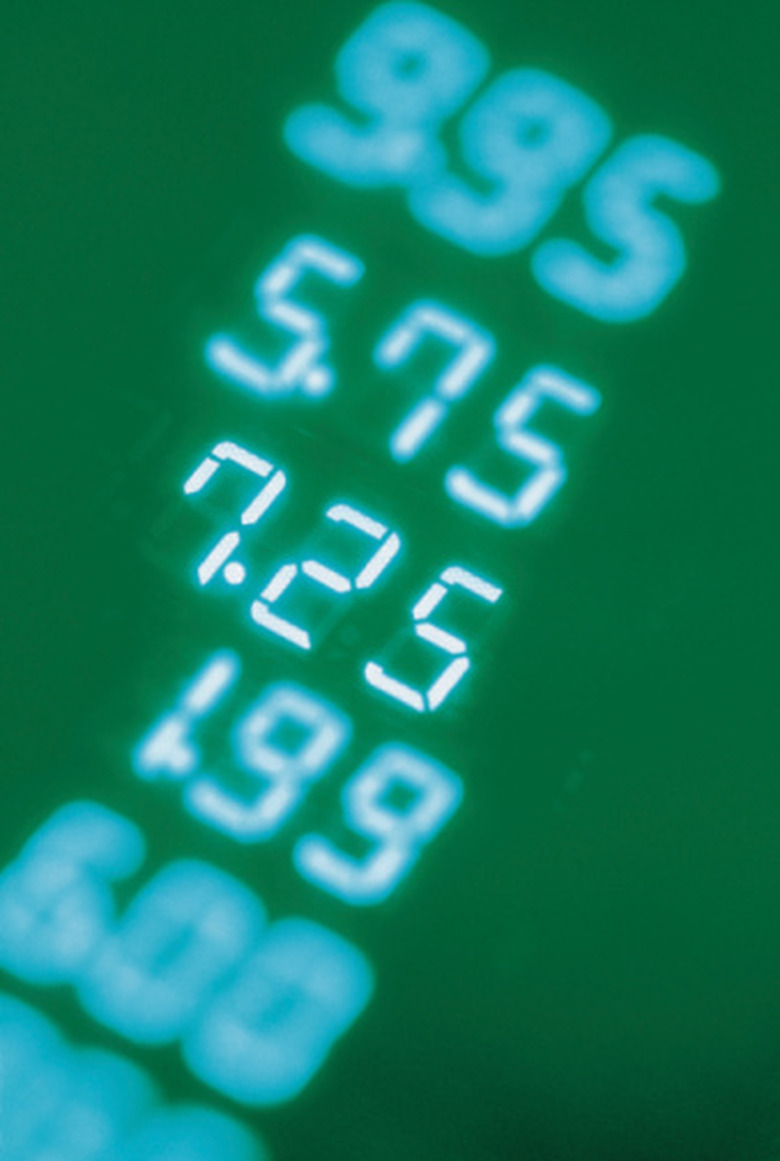How To Convert To Metric Units Using Decimals
The metric system's measurements are based on the number 10. The system includes units for everyday measurement of quantities such as mass, length and volume. A system of metric prefixes serves as sub-units that keep the measurement values to a manageable size. These prefixes represent multiples of 10, and conversion between prefixed metric units is often as simple as moving the decimal point to the left or right of the measurement value. The number of times a decimal point is shifted left or right depends on the prefix value before and after conversion.
Step 1
Create a metric prefix conversion chart on a piece paper. The chart should start with the larger units and end with the smaller units. Include the following metric prefix equality expression in your chart: 1 kilo- = 10 hecto- = 100 deca- = 1,000 base units = 10,000 deci- = 100,000 centi- = 1,000,000 milli-. Additional prefixes may be included for a broader range of conversion possibilities.
Step 2
Identify your starting metric unit, and find it on your metric prefix conversion chart. For example, if you are converting from kilometers to millimeters, then find the prefix of kilo on your chart.
Step 3
Find your destination metric unit, or the unit you want to convert to, on your chart. For example, if you are converting from kilometers to millimeters, find milli- on your conversion chart.
Step 4
Determine whether you are converting from a larger to a smaller unit or from a smaller to a larger unit. For example, if you are converting from kilometers to millimeters, you are converting from a larger to a smaller unit. In this case, the conversion process will use multiplication or moving of the decimal point to the right. This is the same direction you will read across your chart: left to right. When converting from a smaller to a larger unit, the conversion process will involve division or moving of the decimal point to the left. You will read from right to left across your chart when converting to a larger unit.
Step 5
Count the number of equal signs in the conversion chart equality expression between your starting and ending units. This equates to the number of positions the decimal point will shift. For example, if you are converting from kilometers to millimeters, the decimal point will shift six times to the right.
Step 6
Add sufficient zeros to the beginning or end of your starting value to accommodate the number of decimal point shifts, and move the decimal point to convert the unit. For example, if you are converting 6.0 centimeters (cm) to kilometers, the decimal point will shift five times to the left as the unit is converted from a smaller to a larger unit. Add five zeros before the value of 6 to accommodate the five decimal point shifts. The result of moving the decimal point to the left is that 6.0 cm = 0.00006 km.
Cite This Article
MLA
Lewis, Pearl. "How To Convert To Metric Units Using Decimals" sciencing.com, https://www.sciencing.com/convert-metric-units-using-decimals-8079779/. 24 April 2017.
APA
Lewis, Pearl. (2017, April 24). How To Convert To Metric Units Using Decimals. sciencing.com. Retrieved from https://www.sciencing.com/convert-metric-units-using-decimals-8079779/
Chicago
Lewis, Pearl. How To Convert To Metric Units Using Decimals last modified March 24, 2022. https://www.sciencing.com/convert-metric-units-using-decimals-8079779/
